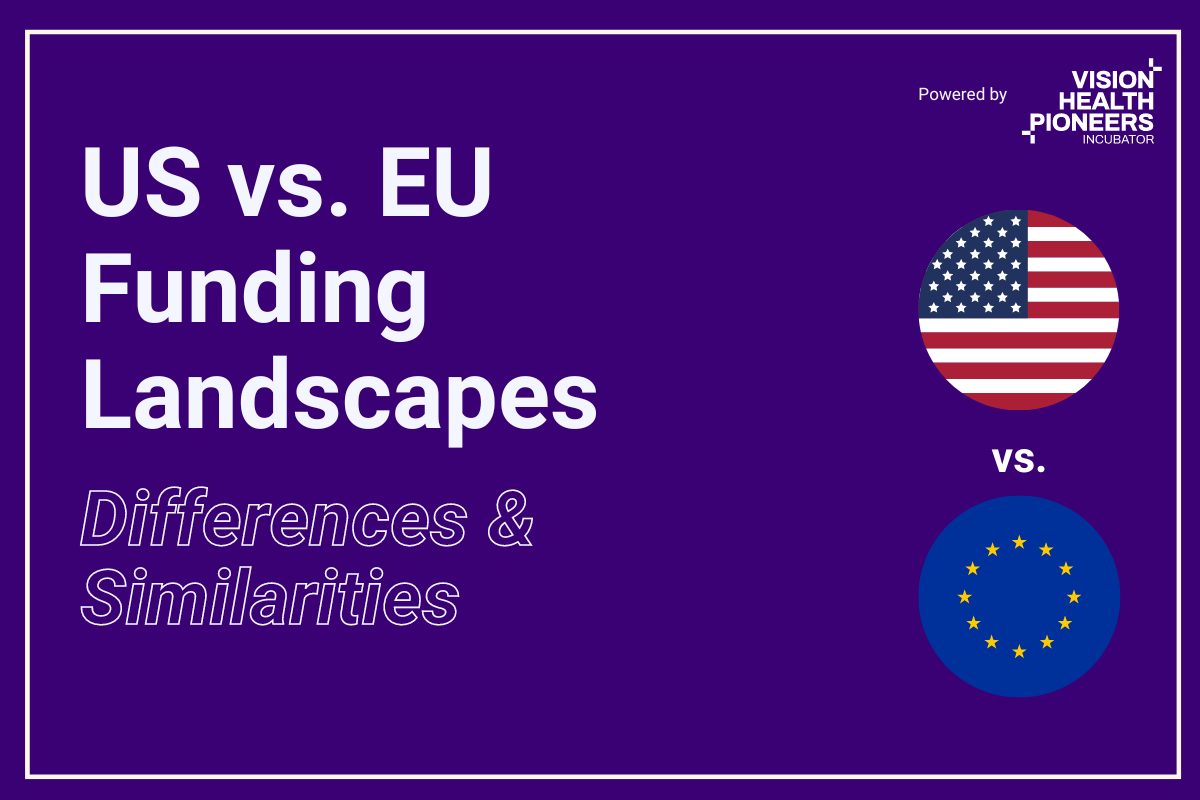
08 May US VS. EU VENTURE CAPITAL FUNDING LANDSCAPES – WHAT ARE THE DIFFERENCES AND SIMILARITIES?
So far this year, the venture capital (VC) landscape in the United States has shown to be a challenging environment for startups, characterized by a significant slowdown in investments and a pivot towards companies that demonstrate early profitability and strong cash flow. Contrastingly, the European venture capital scene, while also competitive, shows a somewhat different trend with a stronger focus on sustainable development and technological innovation in health tech sectors.
European VC firms are particularly interested in health tech innovations that promise long-term societal benefits, aligning more closely with European Union regulations and funding initiatives that encourage health and environmental sustainability. This has resulted in a more favorable environment for startups in these sectors compared to their counterparts in the U.S., where the emphasis is more on immediate financial viability.
In 2024, the VC landscapes in the United States and Europe present distinct challenges and opportunities for early-stage health tech founders. Understanding the differences between these regions is essential for founders seeking funding and strategic partnerships. Let’s delve into the key divergences and offer advice from a VC perspective for founders in both regions.
US vs. Europe: A Comparative Analysis
1. Investment Climate
US: The US market is characterized by a slowdown in investments, with over 55,000 VC-backed companies vying for limited funding. VC firms are increasingly focusing on cash flow and profitability at earlier stages, leading to intense competition. Read more about this here!
Europe: While also competitive, Europe exhibits a stronger emphasis on sustainable development and technological innovation, particularly in sectors like health tech. European VC firms prioritize long-term societal benefits and align closely with EU regulations and funding initiatives.
2. Investment criteria
US: Investors prioritize scalability and operational efficiency, favoring startups with immediate financial viability. This trend is pushing many founders towards early acquisitions and strategic partnerships.
Europe: Investors place importance on long-term impact and societal benefits. Health tech startups that demonstrate potential for improving healthcare outcomes or contributing to environmental sustainability are highly sought after.
3. Strategic Partnerships
US: There’s a growing trend of strategic partnerships and mergers, especially involving corporate investors seeking innovation through acquisitions. Startups often align with larger entities to enhance scalability and competitiveness.
Europe: Startups can leverage local and EU support, including grants and funding initiatives dedicated to health and technology sectors. Strategic partnerships with healthcare providers and institutions are valued for their potential to enhance credibility and market access.
Advice for founders
1. Understand Regional Nuances
- US founders should focus on demonstrating immediate financial viability and scalability to attract investors.
- European founders should emphasize long-term impact and alignment with EU regulations to capitalize on funding opportunities.
2. Leverage Local and EU Support
European founders should leverage local grants and EU funding initiatives dedicated to health and technology sectors, aligning with broader policy goals.
3. Demonstrate Long-term Impact
Focus on showcasing how your health tech contributes to long-term health outcomes or cost savings, appealing to both US and European investors but with nuanced messaging.
4. Build Strategic Partnerships
Align with larger healthcare providers and institutions to enhance credibility and market access, particularly in Europe where such partnerships are highly valued.
By understanding and adapting to the contrasting VC landscapes in the US and Europe, health tech founders can navigate funding challenges more effectively and capitalize on regional opportunities for growth and innovation.



